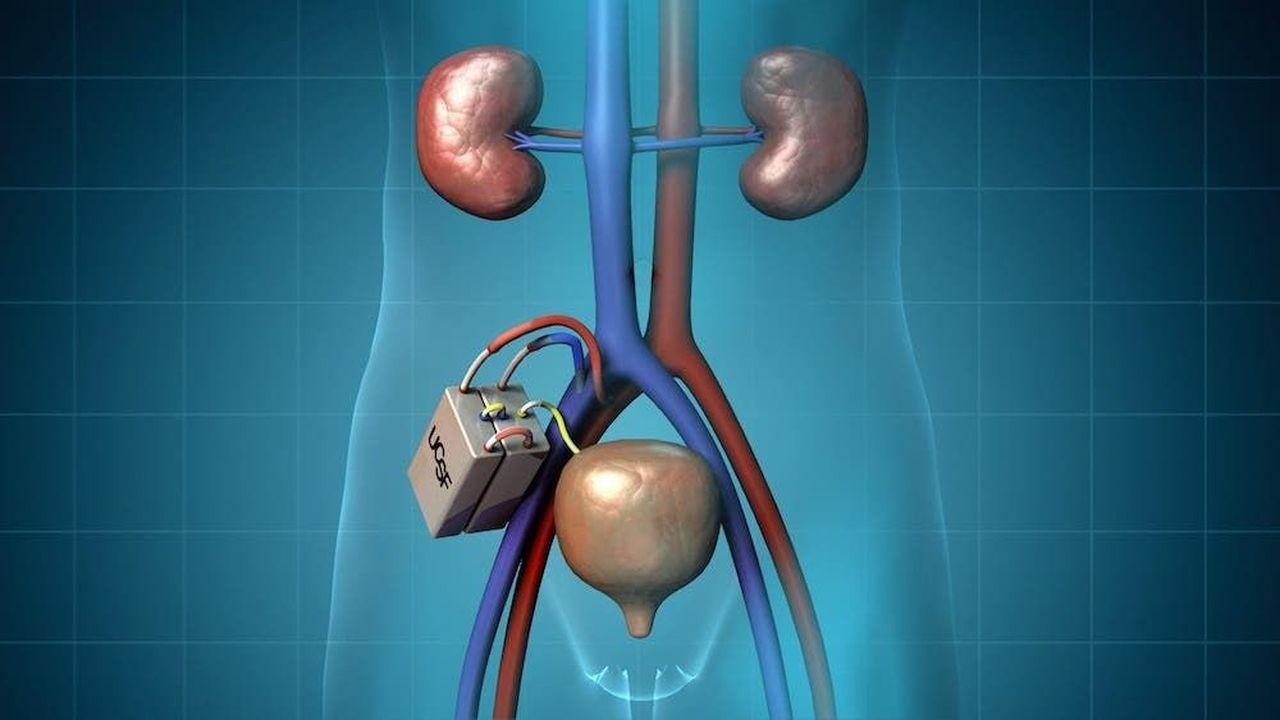Posted on Oct 2, 2021, 2:01 PM
It is easy to forget, when you have two perfectly functioning kidneys, the vital mission that these organs perform: filter more than a liter of blood per minute and evacuate waste from our body. When the kidneys are too weak to perform this function, patients today have no choice but to have regular dialysis or add their name to the waiting list for a transplant. Tomorrow, will they also be able to choose to have a bioartificial kidney implanted?
This is the dream pursued by the “Kidney Project”, a project led by Shuvo Roy, professor in the Department of Bioengineering and Therapeutic Sciences at the University of California at San Francisco (UCSF) and William Fissell, physician at Vanderbilt University Medical. Center (VUMC) in Amsterdam.
Scientists have just won a prize of $ 650,000 (562,000 euros) awarded by KidneyX, a public-private partnership between the United States Department of Health (HHS) and the American Society of Nephrology (ASN) to accelerate innovation in the treatment of kidney disease. In a press release, they explain that this award crowns the “very first demonstration of a working prototype” of their artificial kidney.
A hemofilter and a bioreactor
Their device, the size of a smartphone, consists of two modules that work together to remove waste. First, a “hemofilter” processes the incoming blood by removing waste and toxins, then a kidney cell bioreactor reproduces other kidney functions, for example by returning sugars and salts to the blood.
The Kidney Project device is supposed to be implanted in patients in a procedure similar to a kidney transplant.The Kidney Project
“It resembles the functions of the kidney, notes Cécile Legallais, CNRS research director at the biomechanics and bioengineering laboratory of the University of Technology of Compiègne (UTC), which is not part of the“ Kidney Project ”. “The first step, when the blood passes through the kidney, looks like filtration, and therefore can be mimicked by this hemofilter. Then there is a cellular part that will reabsorb substances that must not be lost, that is the purpose of the bioreactor. And certainly also hormone synthesis activities, because the kidney still performs this function ”.
Artificial organ or bioartificial organ?
Many purely “artificial”, mechanical organs exist, such as the heart created by Carmat, or hemodialysis, which is an external artificial kidney.
A bioartificial organ, like the one in the Kidney Project, is partly mechanical and partly made up of cells from the patient “that we grow in the laboratory where we will give them a renal or other cell character”. Under these conditions, there is in principle no possible rejection of the graft by the patient.
–
“We do not yet know how to implant this type of device in humans”
Wanting to copy the functions of the kidney thanks to a bioartificial organ is a particularly difficult challenge. “This organ, like the liver or the lungs, is very complex in its architecture and very vascularized”, underlines Cécile Legallais. Here, the Kidney Project scientists “show a very nice diagram, which gives the impression that we can easily put this device in the place of a kidney, but there are still big risks in terms of biocompatibility,” risk of coagulation. We do not yet know how to implant this type of device in humans, ”she insists.
Creating bioartificial organs is “a subject that interests different teams around the world at the present time,” adds Cécile Legallais. “The first applications envisaged are rather for drug screening: we create a model of a kidney or another organ to expose it to drugs, as an alternative to animal experimentation.”
For the scientist, simpler bioartificial organs, like the retina or artificial skin, could become a reality “in the years to come”. But the main pitfalls will be regulatory. “We fall into the regulation of the drug to have a future marketing authorization,” she warns. This means that there are very many tests to be done beforehand and with for the moment quite astronomical costs in terms of production of a prototype ”.
Preclinical tests in progress
The “Kidney Project” is currently in the midst of preclinical trials for the hemofilter, the results of which are “encouraging”, according to their official website. “We have successfully implanted small-scale versions of the Hemofilter component in large animal models up to 1 month old. The animals responded well, without serious complications, ”says their press release. Concerning the bioreactor, preclinical tests have just started. The two modules have therefore never been tested together, let alone in humans.
“In the best case scenario, we might be ready to start the hemofilter material safety study in 2022,” he said. As their press release admits, this scenario assumes that scientists manage to raise “sufficient funding” and “that no unforeseen scientific, technical or regulatory downside” presents itself.
–


